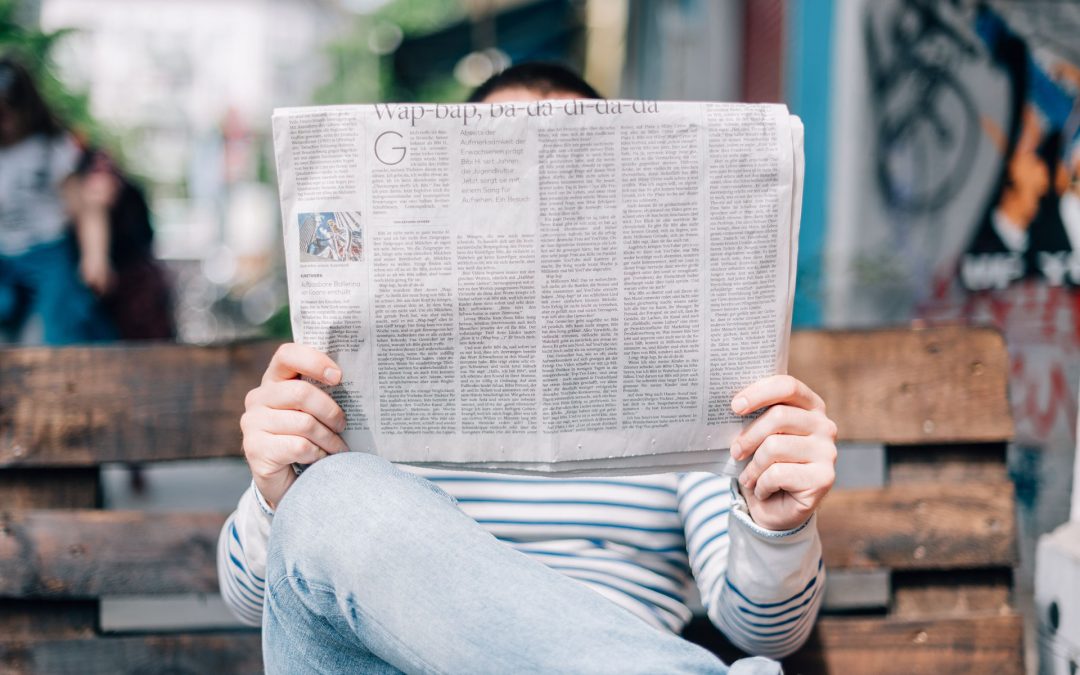How News Is Written In Journalism Newspaper. This topic will be discussed in this article. From this we include a list of the importance of the news.
- It allows us to keep informed of events that affect the life of society, such as; diseases, new policies, specific care in adverse situations, etc.
- The news reports on news that can help us improve our quality of life.
- They generate reliable information for decision making, mainly when it is based on future expectations such as investment.
- It allows creating new products by using technology to solve the problems of daily life.
- Generates knowledge by pointing out points that may be unknown, if the news is not explained by the viewer, it is advisable that he investigate it on his own.
Writing news for a newspaper involves several key steps, which can be effectively summarized in a tabular guide format. Here’s a simplified breakdown:

- Headline: Craft a catchy and informative headline that captures the essence of the news story.
- Lead: Write the lead paragraph that summarizes the most important aspects of the news (the 5 Ws – Who, What, When, Where, Why, and sometimes How).
- Body: Develop the story in the body, providing details, background information, and additional context. This section often includes quotes and viewpoints from various sources.
- Concluding Statement: End with a strong concluding statement or a paragraph that sums up the story or provides a look into potential future developments.
- Fact-Checking and Editing: Ensure all facts are accurate and the article is free from grammatical and spelling errors.
- Layout and Design: Fit the news piece into the newspaper layout, considering aspects like column size, text formatting, and the inclusion of images or graphics.
Here’s how this guide can be presented in a tabular format:
| Step | Description |
|---|---|
| Headline | Create a short, engaging title for the news piece. |
| Lead | Summarize the key points of the story in the first paragraph. |
| Body | Elaborate on the details, background, and provide multiple perspectives. |
| Conclusion | Wrap up the story with a concluding thought or future outlook. |
| Fact-Checking/Editing | Verify accuracy and edit for clarity and grammar. |
| Layout/Design | Fit the article into the newspaper’s layout, considering visual elements and text formatting. |
This table is a basic guide and can be adapted or expanded based on specific requirements or styles of different newspapers.
After the reporter has obtained the news, he returns to the office and writes his story as rapidly as possible, in accordance with any instructions that the city editor may give him. If it is inexpedient for him to return to the office, he writes his story quickly at some convenient place and sends it to the office by messenger or by telephone. Under some circumstances, particularly when lack of time prevents his writing the story and sending it in, he telephones the facts to a rewrite man in the office, who writes the story from the data thus secured. The reporter for a local news association prepares his stories, as directed by the news editor of the association, under practically the same conditions as the newspaper reporter.
The correspondent, after writing his story, mails it, files it at the telegraph office, or telephones it to the newspaper office. He, too, may telephone the bare facts to have them written in news-story form by a rewrite man in the newspaper office. The correspondent of a general news-gathering agency handles his news in the same way except that he sends it by mail, telegraph, or telephone to the district office of the association or agency that he represents. At this district office it is edited and sent out to those papers in various parts of the country that use the association’s service. As news stories, whether local or telegraph, are edited before they are printed, practically all stories as they appear in the newspaper are the work not only of the reporter or correspondent who gathered the news, but of one or more editors and copy-readers. Well-written stories of reporters and cor- respondents usually undergo little change when edited. A poorly written story, on the other hand, may be made over into a very effective one by a rewrite man, an editor, or a copy-reader.
Conditions affecting news writing.
The structure and the style of news stories are determined (1) by the conditions under which they are written, (2) by the character of the readers, (3) by the conditions under which news- papers are read, (4) by the typographical form of newspapers, and (5) by the popular taste.
TYPES OF NEWS WRITING.
Newspaper writing must be done rapidly under considerable pressure and generally without opportunity for careful revision. Although this haste does not excuse incorrect and slovenly English, it does result in looser, less finished waiting than might be produced under more favorable circumstances. In rapid writing, and particularly in handling similar material from day to day, the writer, unless he is on his guard, is likely to fall into the habit of using stock phrases, trite and colorless. The large amount of available news that must be crowded daily into limited space makes it essential to present the news in compact form and concise style. “Boil it down” and “Cut it to the bone” are constant ad- monitions in every newspaper office.
Conciseness is a necessary quality of newspaper style. The average newspaper, in order to succeed, must appeal to all classes of readers in the community. It must present its contents in a way that will attract and interest the so-called masses as well as the business and the professional classes. The style of writing is generally adapted to readers of limited education no less than to the well educated. Comparative simplicity of expression, accordingly, is the rule in newspaper writing. Newspapers are read rapidly by practically all classes of readers. They must, therefore, be written in a style that makes rapid reading easy.
Important details are placed at the beginning of paragraphs and sentences, where they will catch the eye at once. The emphasis thus given by the initial position is one of the distinctive characteristics of newspaper writing. To the most important details made prominent in this way are added the less significant but necessary particulars, one by one, in natural order. This arrangement results in a loose rather than a periodic sentence structure and eliminates the possibility of a climactic effect in the paragraphs or in the whole story.
The shortness of the line in the narrow column affects newspaper style because it necessitates a proportionate shortening of the paragraph. Para- graphs that appear long seem heavy and uninviting, especially to the rapid reader. Since but six words on an average can be crowded into a line in news- papers, as compared to ten or twelve in a line in most books, newspaper para- graphs can be only half as long as those in ordinary prose without loss of effectiveness. The popular demand for novelty and variety prevents any form of news- paper writing from becoming fixed, and results from time to time in the development of new forms and new styles of news writing.
To make some news stories entertaining rather than purely informative, a number of newspapers NEWS WRITING abandon the conventional summary beginning, or lead, and use unconventional ones like the beginnings of short stories. They likewise give prominence to trivial happenings worked up into so-called “human interest” or “feature” stories, because in that form they make entertaining reading.
Conclusion
Understanding how news is written in a newspaper provides valuable insights into the journalistic process. The inverted pyramid structure, along with attention-grabbing headlines and concise leads, allows newspapers to convey information efficiently to readers. By following journalistic practices such as thorough research, objective reporting, and clear writing, journalists ensure that news articles remain credible and informative. So the next time you pick up a newspaper, take a moment to appreciate the effort and expertise that goes into each news story.
